This history was compiled and written by members of the Second U.S. Cavalry Co. A. Excerpts are from One Hundred Years with the Second Cavalry, Lambert, Joseph I., Major, USA: Newton Publishing Company, San Antonio, TX, 1999.
1861 - Beginnings
In early 1861, the 2nd Dragoons were scattered around the frontier:
Fort Leavenworth, KS: Companies C and K
Fort Kearny, NE: Company A
Fort Laramie, NE: Companies D and F
Taos, NM: Companies G and I
Camp Floyd (Ft. Crittenden), UT: Companies B, E, and H
Orders received in June began moving troops into areas deemed threatened by the coming conflict. Of the two companies at Fort Leavenworth, Company K arrived at Washington City in time to participate in the First Battle of Bull Run/Manassas in late July.
First Manassas
On 21 July 1861, Company K, Second Dragoons, under Capt. Armstrong fought as part of a cavalry force under Maj. Innis Palmer, Second (now Fifth) Cavalry, which included two companies from First (now 4th) Cavalry and four companies from Second (now 5th) Cavalry. This force, assigned to Porter's First Brigade of the Second Division, saw most of their action on the Union between Sudley Church and the Warrenton Turnpike.
After supporting brigade infantry for some time, "The Cavalry were engaged in feeling the left flank of the enemy's position, in doing which some important captures were made -- one by Sergeant Sachs, of the Second Dragoons, of a General George Steuart, of Baltimore. Our cavalry also emptied the saddles of a number of the mounted rebels." This quote comes from Col. Andrew Porter's (16th Infantry) report on his brigade's actions. He further credits this cavalry force, along with some Regular Infantry and Marines, as providing valuable rear-guard support for the later retreating Federal Army. Capt. William W. Averell indicates that Capt. Armstrong's Dragoons, along with Arnold's Battery was the last of the Brigade to leave the field. Capt. Armstrong's own report makes additional mention of his company being used to slow the headlong retreat of some Rhode Island volunteers.
This first contingent of Second Dragoons into the fray acquitted themselves well despite the Army's overall defeat. Of the cavalry battalion's casualties (13 wounded and five missing), two enlisted Dragoons suffered non-lethal wounds.
Additional Facts:
Maj. Gen'l. George Steuart of the Maryland CS Militia, whom Sergeant Sachs captured, had come looking for his son George, who was serving as a Confederate officer. He had served with the Second Dragoons as a Second Lt. from 1848 through early 1855. He resigned his commission with the First (old) Cavalry in April 1861.
Capt. Armstrong, who Commanded Company K, Second Dragoons, resigned his commission on August 13, 1861, and later rose to the rank of Brigadier General, C.S.A.
Wilson’s Creek
Company C entered the great arena at the battle of Wilson’s Creek, Missouri. Since leaving Utah in 1859, it had been almost constantly in the field in Kansas and Nebraska. In the general drift of the Army toward the east, in February 1861, Company C arrived at Fort Leavenworth, Kansas. It marched again on June 11th under Lieutenant Farrand, First Infantry, and arrived at Springfield, Missouri, on August 6th to form part of General Lyon’s force.
Twenty thousand Confederates under General Prince had been trying hard to catch up with General Lyon’s force of 5000 men. By August 9th, despairing of overtaking them, the Confederates went into camp at Wilson’s Creek, Missouri. Fearful of the loss of prestige in the doubtful state of Missouri if he retreated beyond Springfield, General Lyon decided to attack early in the morning. His plan divided his force into two parts in the face of a vastly superior enemy. Major Sturgis commanded one part and Col. Sigel the other, which included Company C, Second Dragoons (now officially called 2nd Cavalry). Early on August 10th, Sturgis’s wing attacked the enemy from the front, while Sigel made a broad movement and approached from the rear. The attack was a complete surprise and threw the Confederates into confusion. Advancing slowly with the cavalry in front, Col. Sigel cut off small parties of Confederates resting on the outskirts of their camp. This was done so well that the enemy was not aware of their approach until they were within sight of their tents. During the ensuing engagement, the cavalry was placed on the flanks.
Meanwhile, the Army’s main force attacked and made good progress in driving the enemy south. While heading a regiment of Kansas troops, General Lyon was killed. During the fight in Sigel’s front, a force carrying Union flags and wearing Federal uniforms was seen to approach. His troops did not fire upon them, thinking they were a part of Lyon’s force. However, these were Confederates in disguise, and once at close range, they opened an intensive fire upon Sigel’s men. There was an utter rout of the small force, which fled in panic toward Springfield. The other half of the command under Sturgis was now forced to withdraw; a bold effort against a superior force had failed.
Name Change
In the above description of First Manassas, you may have noticed some confusion about regimental numbering. Here's where we get it straight. This is must-know info for researching US Regular Cavalry units during this period.
On August 3, 1861, Federal orders transformed American mounted units of various types into a single, standard description. Dragoons, Mounted Rifles, and Cavalry regiments were all known henceforth as… Cavalry!
Here's how they changed, in order of seniority:
Old Name New Name
1st Dragoons (1833) became 1st Cavalry
2nd Dragoons (1836) became 2nd Cavalry (that's us)
Mounted Rifles (1846) became 3rd Cavalry
1st Cavalry (1855) became 4th Cavalry
2nd Cavalry (1855) became 5th Cavalry
3rd Cavalry (1861) became 6th Cavalry
Previous to this change, each service had its distinctive uniform trim color for jackets and non-commissioned officer trouser stripes. Service colors were Infantry, light/dark blue; Artillery, red; Dragoons, orange; Mounted Rifles, green; and Cavalry, yellow.
Rodenbough, in his comments, says "By this, the "Second Dragoons" became the Second Regiment of Cavalry, under which name it will hereafter be referred to in this book. Alas! for the cherished "orange", it must give place to the gaudy yellow; "but the troops", so read the order, "will be permitted to wear out the clothing now on hand." The marvelous durability of orange facings, or the prodigious quantity of similar clothing "on hand" in the "Second", enabled that regiment to postpone for more than two years the thorough execution of that order; and when eventually forced to "change their stripes", the depressing effect might have caused an ignorant civilian to look upon yellow cloth as military mourning".
Getting Everybody Together
As the far-flung companies came together with their regiments, the 3rd and 4th regiments would remain almost exclusively in the Western, or Trans-Mississippi, theater until the war's end. The 1st, 2nd, 5th, and 6th regiments would form, in the east along with an occasional volunteer regiment, the "Reserve Brigade,” under the 2nd's old commander, Phillip St. George Cooke (also father-in-law to J.E.B. Stuart).
For example, our own Company A reports the following in the muster roll for the period ending December 31, 1861: "The Company commanded by Capt. B[rockholst] Livingston, 3d Cavalry, marched from Fort Kearny N.T. en route for Washington Nov 8th, 1861, in compliance with S[pecial] O[rder] No. 176 dated H[ea]d Q[uarte]rs of the Army Washington D.C. Oct 26th, 1861, and arrived at Fort Leavenworth Kansas Nov21st, 1861, 296 miles. Left Ft. Leavenworth Nov 22nd, 1861, under the command of Capt. J. T. Ray 2d Infty. and arrived this City Nov 29th, 1861". The company captain was absent with leave for sixty days from December 3rd, and the only other officer, 1st Lieutenant Chas. McKee Loesser had been recently assigned to the company but on detached service. The following men were listed present for duty:
James Riley, 1st Sgt.
Joseph D. O'Brien, Sgt.
Thomas Maloney, Sgt.
Richard H. Chinn, Sgt.
Charles Prossig, Cpl.
David Lee, Cpl.
James Timmons, Cpl.
Michael Cullen, Bugler
William E. Stratten, Bugler
James Rhien, Farrier
27 Privates
Not present were four Privates on extra or daily duty, two Privates sick, and six Privates in arrest or confinement. In November, three Privates had deserted with all their equipment. Of the men listed above, by April 1865, only James Timmons remained with the Company, noted as 2nd Sergeant and starting his third enlistment.
1862 - Under Construction
1863
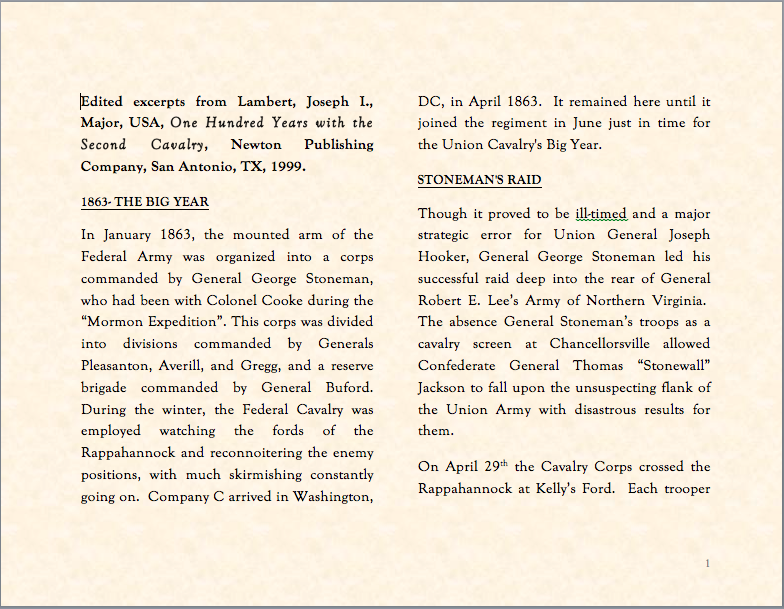
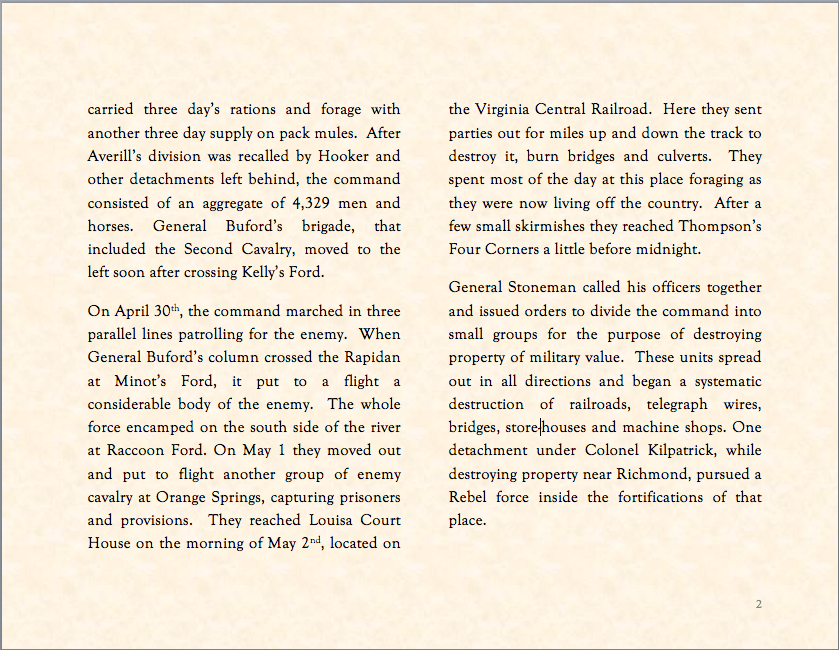
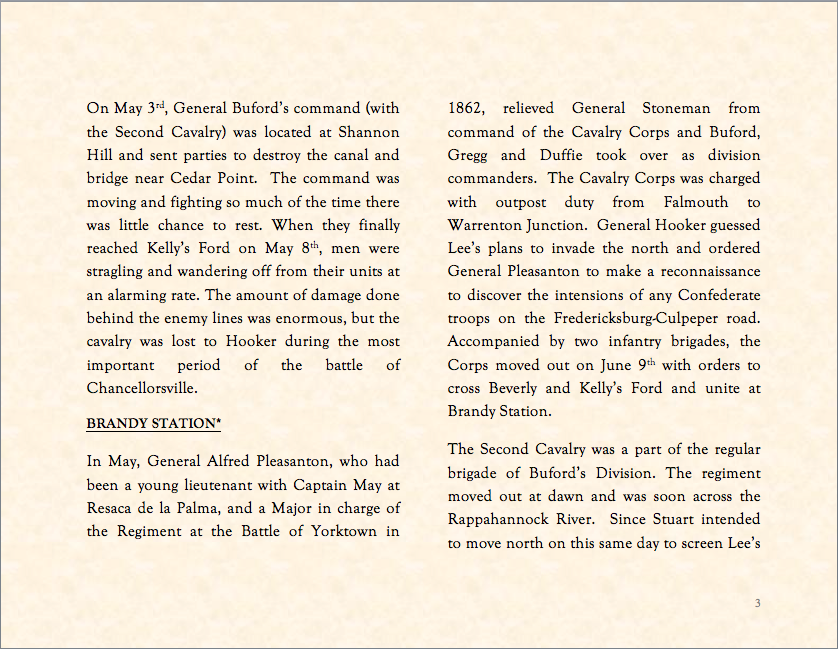

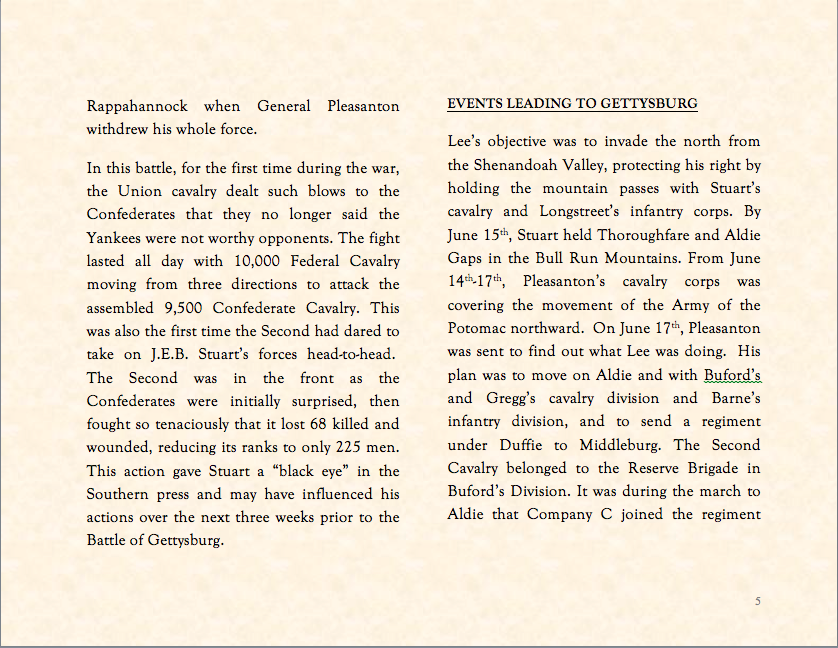
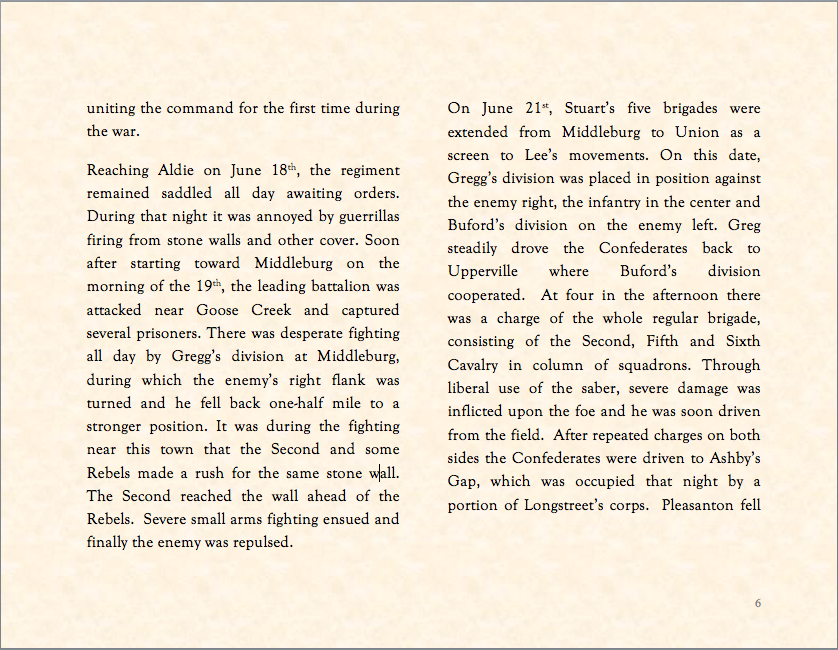
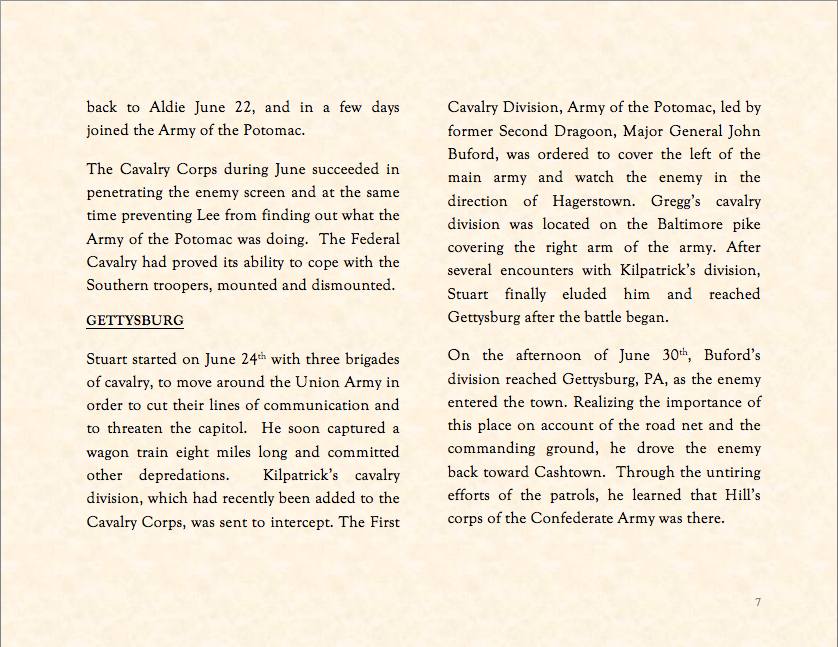
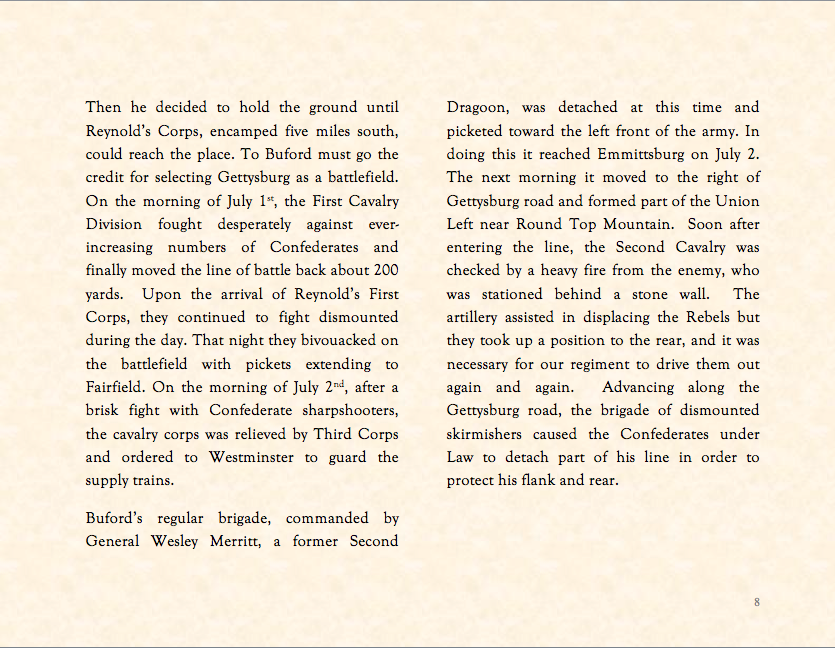
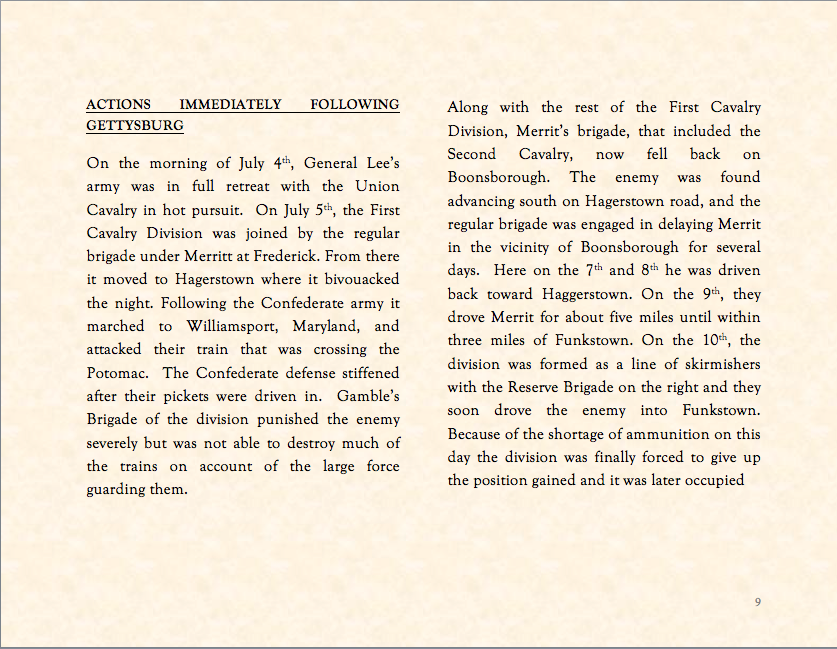
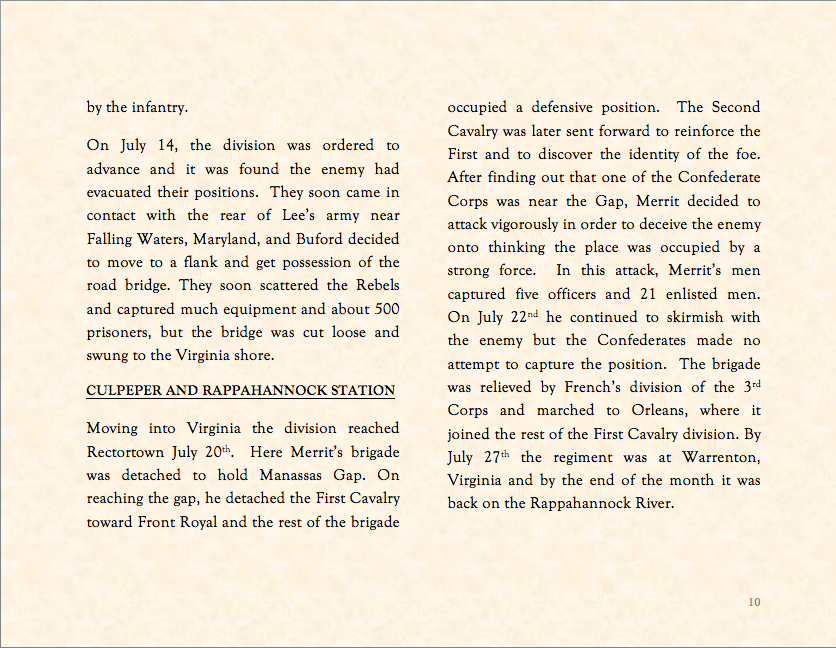
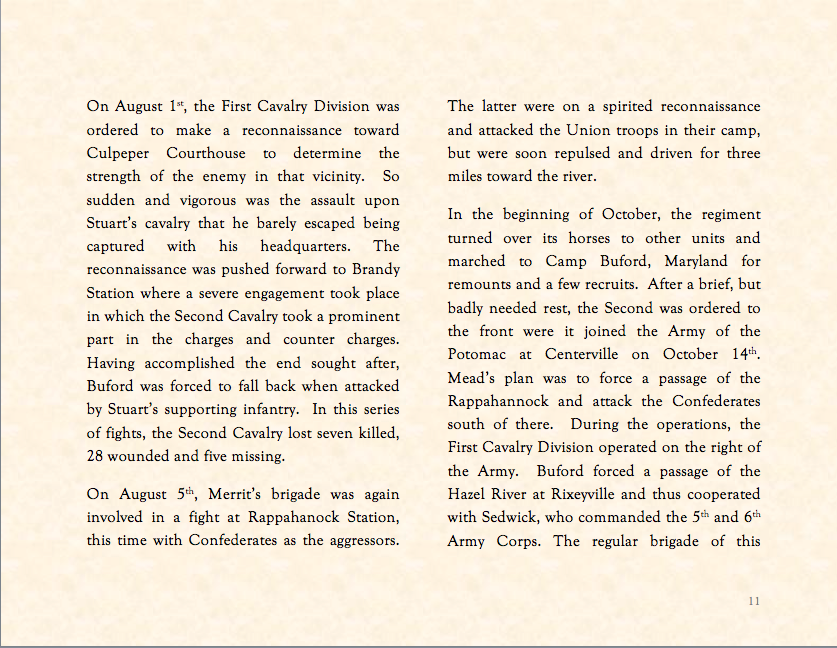
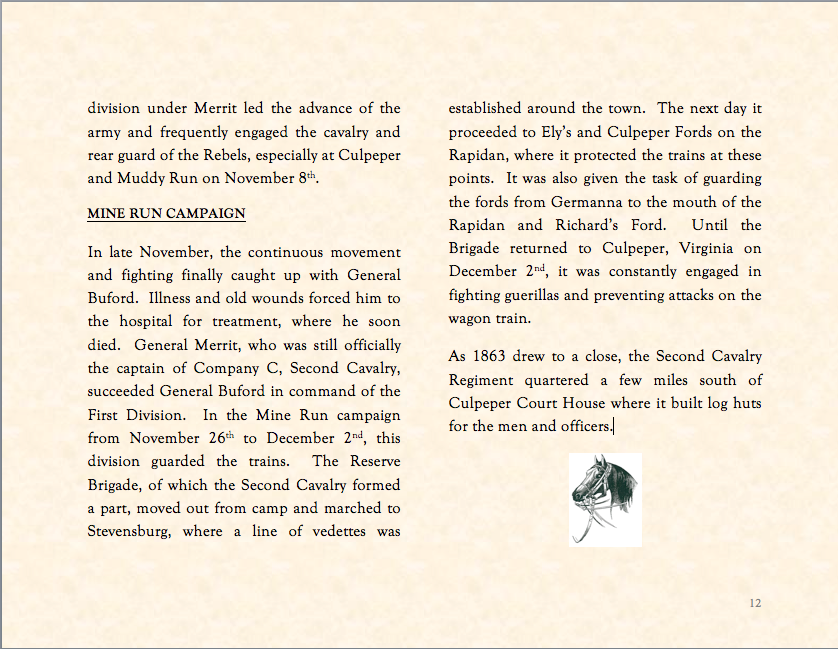
1864 - Under Construction
Don Stivers, "Sergeant's Valor"
On September 19, 1864, at Winchester, VA, Orderly Sergeant Conrad Schmidt of Co. K, 2nd U.S. Cavalry saw his commander go down in a charge against Confederate breastworks. Captain Rodenbough was barely 15 yards from the enemy line. Sgt. Schmidt came to his rescue and later earned the Medal of Honor for his actions.
